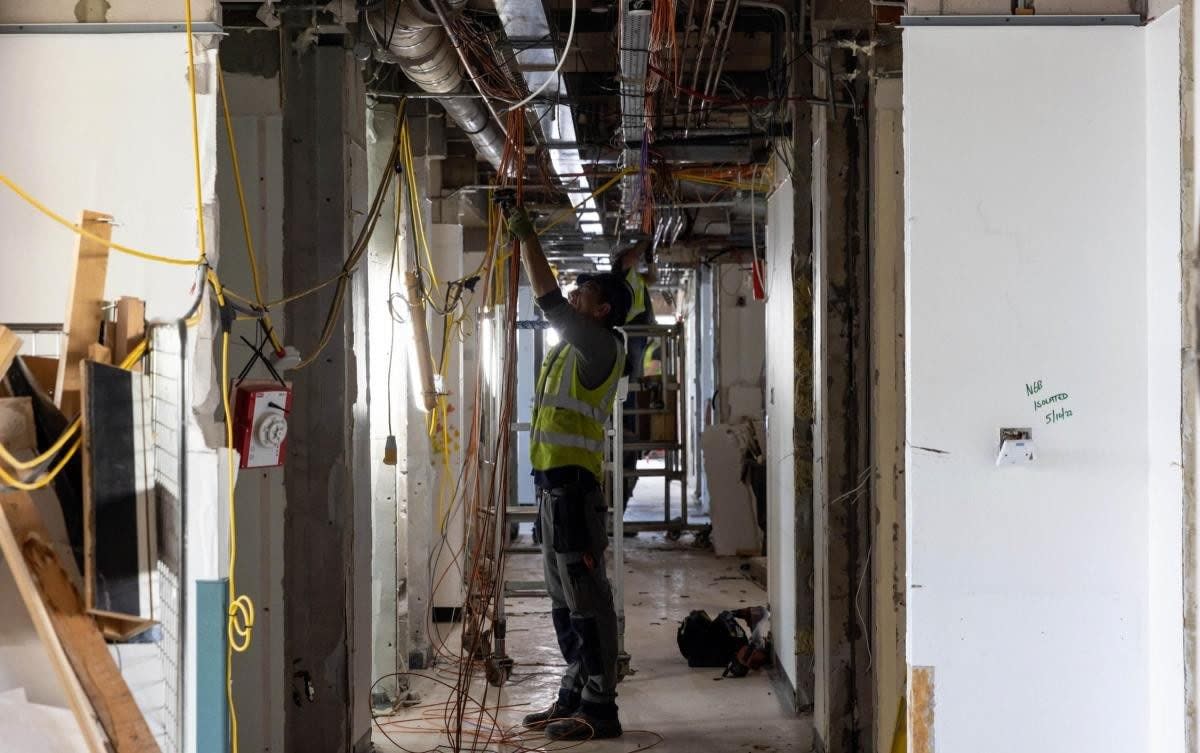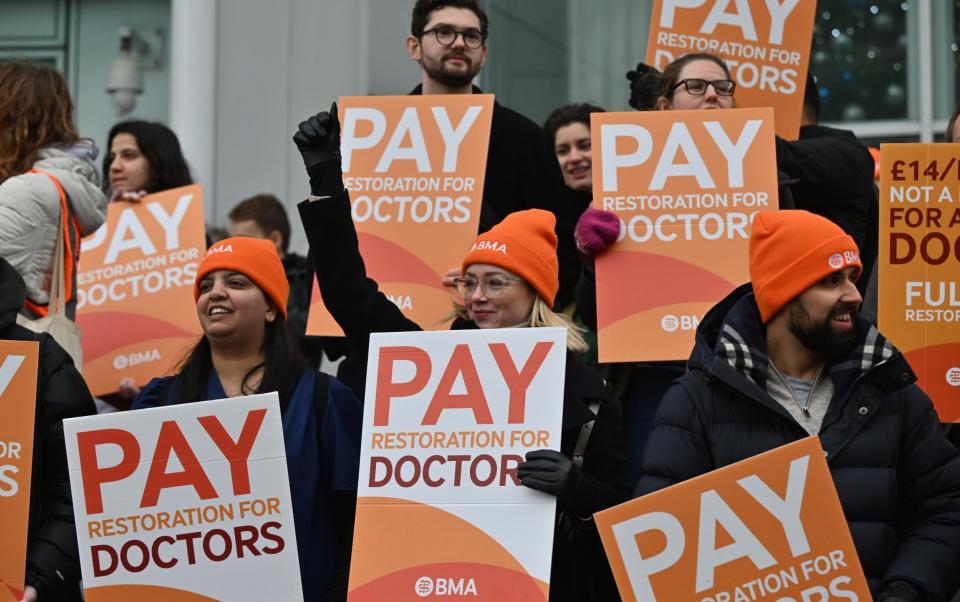Crumbling NHS buildings are putting patients in danger, warns IFS

Crumbling NHS buildings are putting patients in danger, according to a leading think tank, which found that striking doctors were hampering efforts to repair rundown hospitals.
The Institute for Fiscal Studies (IFS) said a £12.5bn maintenance backlog was being made worse by industrial action, as the NHS has been forced to raid vital investment budgets to pay for staff overtime and cover.
Max Warner, an economist at the think tank, said the budget shortfalls had led to a record backlog including a sharp increase in the number of so-called “high-risk” repairs, suggesting patients and staff were at much greater risk of “serious injury”.
The NHS defines “high risk” as cases “where repairs/replacement must be addressed with urgent priority in order to prevent catastrophic failure, major disruption to clinical services or deficiencies in safety liable to cause serious injury and/or prosecution”.
Mr Warner said: “These aren’t just small things that might go wrong. It’s actually something that poses a real credible risk, like the strength of the ceilings in wards. It’s really quite concerning.”

He said the amount of investment needed to eradicate the entire maintenance backlog had more than doubled in real terms over the last decade from £5.4bn to £12.5bn.
This includes a quintupling of the cost of fixing “high-risk” incidents since the Tories took power in 2010.
The think tank said that the Conservative government had broken the “habit of a lifetime”, whereby health spending usually rises faster than plans set out at the start of each parliament. The current government has by contrast increased health spending less quickly than pledged when Boris Johnson won the 2019 general election.
Based on analysis at the last general election, Conservative Party plans implied that the day-to-day health budget in England would rise by 3.3pc per year in real terms over the course of this parliament. The Government’s latest plans imply average growth of 2.7pc per year, the IFS said.
Health spending has fallen short as spiralling inflation has put greater pressure on departmental budgets and as growing demands on the health service has seen its share of day-to-day spending surge.
The health budget has risen dramatically from a 26pc share of all daily departmental budgets in 1998-99 to 43pc in 2022-23.
The IFS said the next government faced “confronting the reality” that meeting current commitments to increase health spending would therefore require “trade-offs elsewhere”.
Mr Warner said: “Whichever party takes office after the next election won’t have long to set out departmental budgets for the next fiscal year, and the choice of how much to give to the Department of Health and Social Care will effectively dominate everything else.”
The IFS highlighted that NHS budgets allocated to clear maintenance backlogs had been repeatedly raided since 2010 to “meet in-year spending pressures”, including £1bn in the previous tax year.
Previous work by the Nuffield Trust has shown the NHS spent more than half a billion pounds in six months last year on overtime, owing to strikes in the health service.
It also warned that managers’ time had also been “consumed with both the logistics and workplace politics of rolling industrial action”.
Sally Gainsbury, a senior analyst at the Nuffield Trust, said: “Covering the day-to-day running costs of the NHS by raiding money set aside for investment for fixing urgent repairs, building new facilities, and purchasing new equipment is in nobody’s interest, but unfortunately it is the norm given over a decade of underinvestment in the health service and public health.”
Mr Warner said the backlog was “holding back NHS performance because if your ward can’t fit patients in where you need them, or you have to move wards in order to accommodate building work, that reduces NHS performance”.
The IFS warned that investment in maintaining and repairing hospitals and other NHS buildings had been “insufficient to maintain the quality of the physical NHS estate”.

The NHS has identified 54 hospital sites in England with confirmed reinforced autoclaved aerated concrete (RAAC) problems, the same issue that forced the closure of schools last year.
Mr Warner said: “This deterioration in the quality of the NHS estate and the inadequate levels of capital investment more generally are likely to be part of the explanation for the NHS’ disappointing productivity performance in recent years.”
Seven of the hospitals plagued by RAAC will be rebuilt by 2030. The Government has announced £700m of funding until 2025 to do this.

